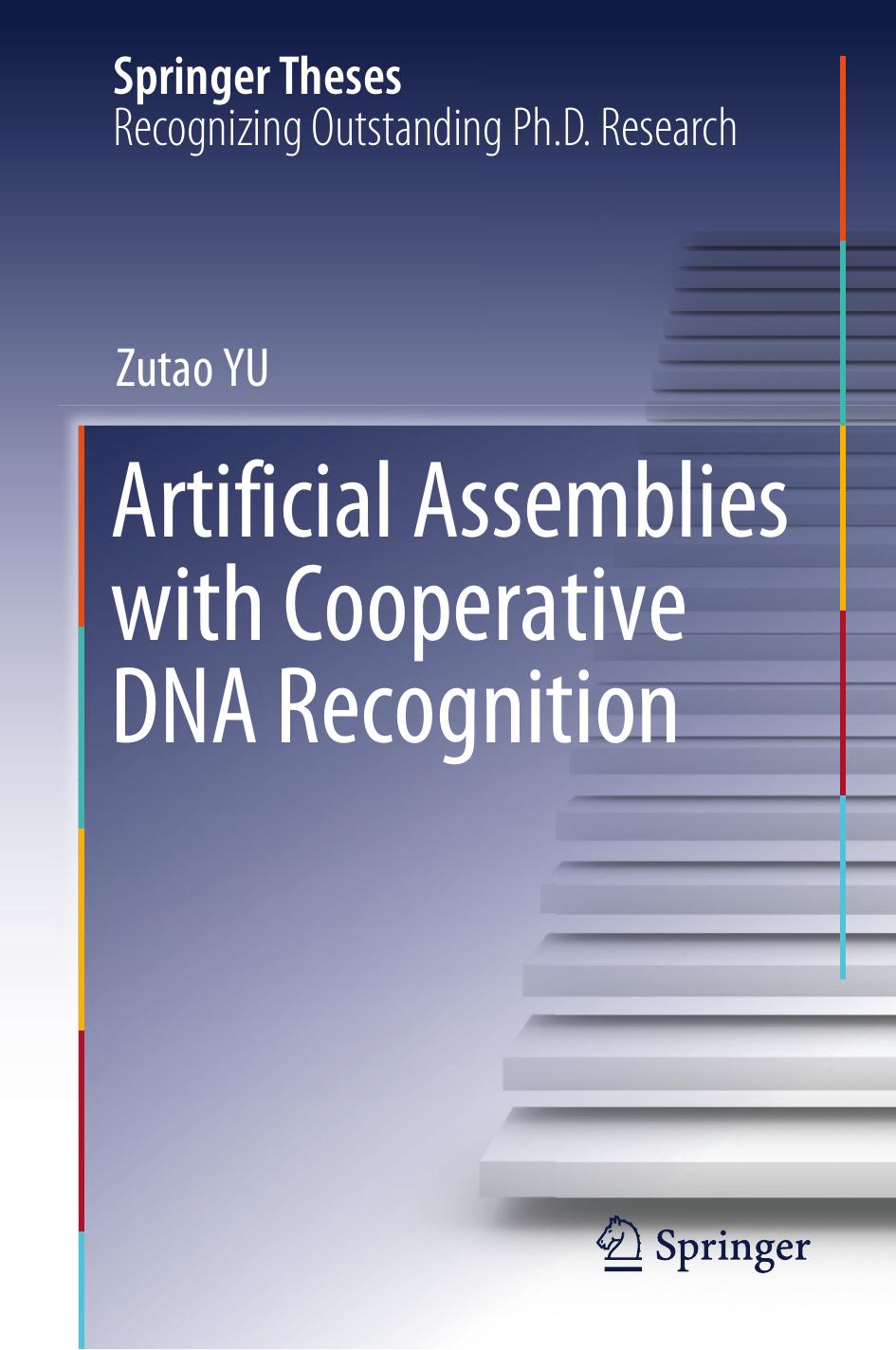Artificial Assemblies with Cooperative DNA Recognition by Zutao YU

Author:Zutao YU
Language: eng
Format: epub, pdf
ISBN: 9789811544231
Publisher: Springer Singapore
2.4 Cell Study of PIP–HoGu System
Therefore, because we had compellingly demonstrated its cooperativity in several in vitro assay systems, we were encouraged to apply PIP–HoGu to a cell-based assay. The estrogen response element (ERE) is the specific target motif of the estrogen receptor α (ERα) homodimer, which induces significant downstream gene activation (Fig. 2.7a) [44]. In ERα-positive, 17β-estradiol (E2)-stimulated T47D-KBluc cells that highly express luciferase after binding of three tandem ERα TF pairs, PIPs Ada3, Cyd2, and Ada3–Cyd2 that bound to the ERE consensus half-site (5′-WGGWCW-3′) were tested for 48 h together with the delivery reagent endoporter (Figs. 2.7b, c and 2.8) [45].
Fig. 2.7Cell-based assay of PIP–HoGu. a Crystal structure of estrogen receptor α (ERα) homodimer and DNA sequence. b The sequence of estrogen response element (ERE)-driven luciferase in T47D-KBLuc cells. c The structural design of Ada3 and Cyd2 targeting ERE sites (Fig. 2.8). d Conjugates Ada3, Cyd2, and Ada3–Cyd2 were screened for suppression of ERE-driven luciferase normalized to total protein using the BCA protein assay
Download
Artificial Assemblies with Cooperative DNA Recognition by Zutao YU.pdf
This site does not store any files on its server. We only index and link to content provided by other sites. Please contact the content providers to delete copyright contents if any and email us, we'll remove relevant links or contents immediately.
| Automotive | Engineering |
| Transportation |
Whiskies Galore by Ian Buxton(41879)
Introduction to Aircraft Design (Cambridge Aerospace Series) by John P. Fielding(33064)
Small Unmanned Fixed-wing Aircraft Design by Andrew J. Keane Andras Sobester James P. Scanlan & András Sóbester & James P. Scanlan(32743)
Craft Beer for the Homebrewer by Michael Agnew(18140)
Turbulence by E. J. Noyes(7936)
The Complete Stick Figure Physics Tutorials by Allen Sarah(7307)
Kaplan MCAT General Chemistry Review by Kaplan(6867)
The Thirst by Nesbo Jo(6826)
Bad Blood by John Carreyrou(6552)
Modelling of Convective Heat and Mass Transfer in Rotating Flows by Igor V. Shevchuk(6391)
Learning SQL by Alan Beaulieu(6211)
Weapons of Math Destruction by Cathy O'Neil(6143)
Man-made Catastrophes and Risk Information Concealment by Dmitry Chernov & Didier Sornette(5921)
Digital Minimalism by Cal Newport;(5664)
Life 3.0: Being Human in the Age of Artificial Intelligence by Tegmark Max(5474)
iGen by Jean M. Twenge(5366)
Secrets of Antigravity Propulsion: Tesla, UFOs, and Classified Aerospace Technology by Ph.D. Paul A. Laviolette(5309)
Design of Trajectory Optimization Approach for Space Maneuver Vehicle Skip Entry Problems by Runqi Chai & Al Savvaris & Antonios Tsourdos & Senchun Chai(5011)
Pale Blue Dot by Carl Sagan(4912)
